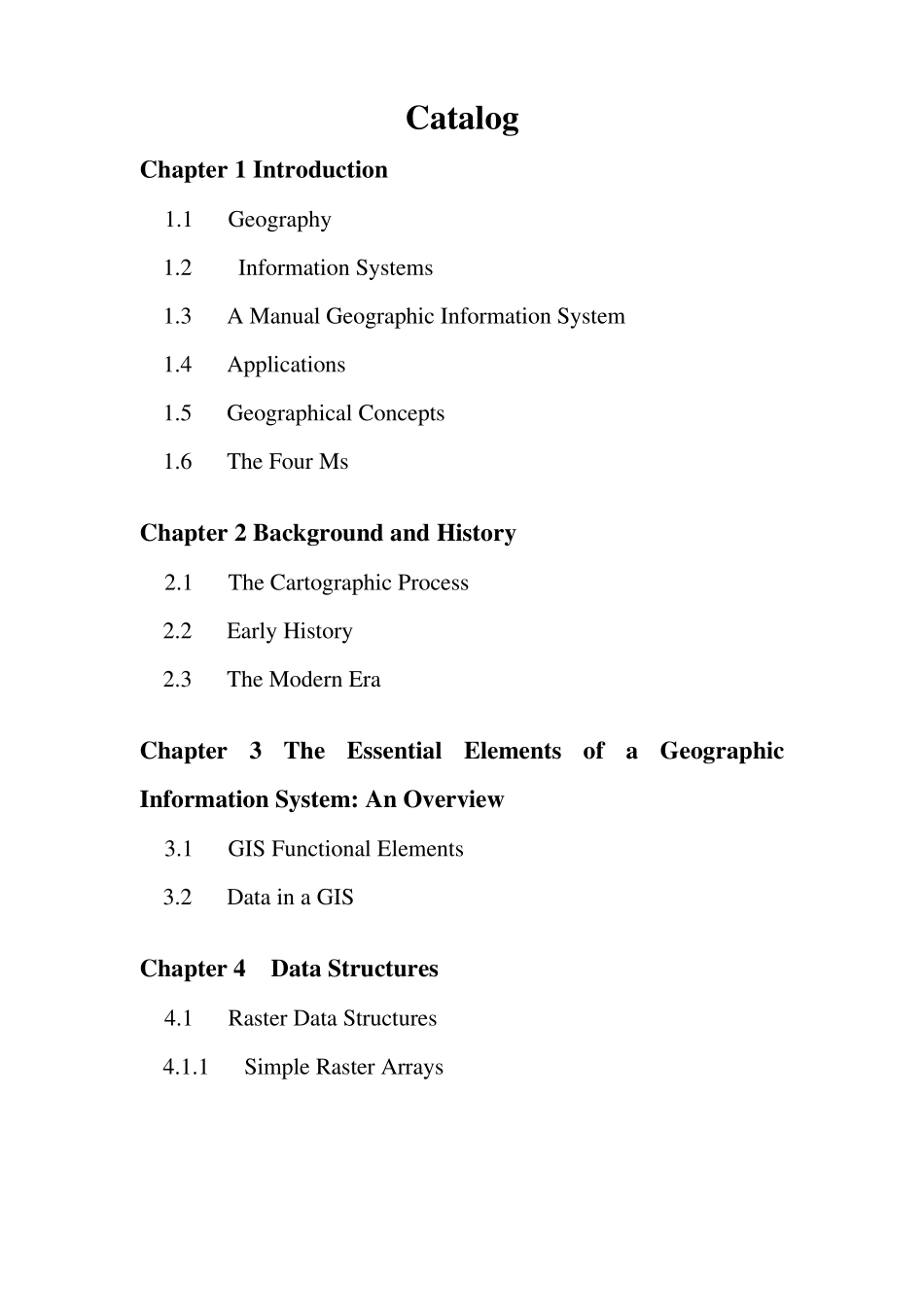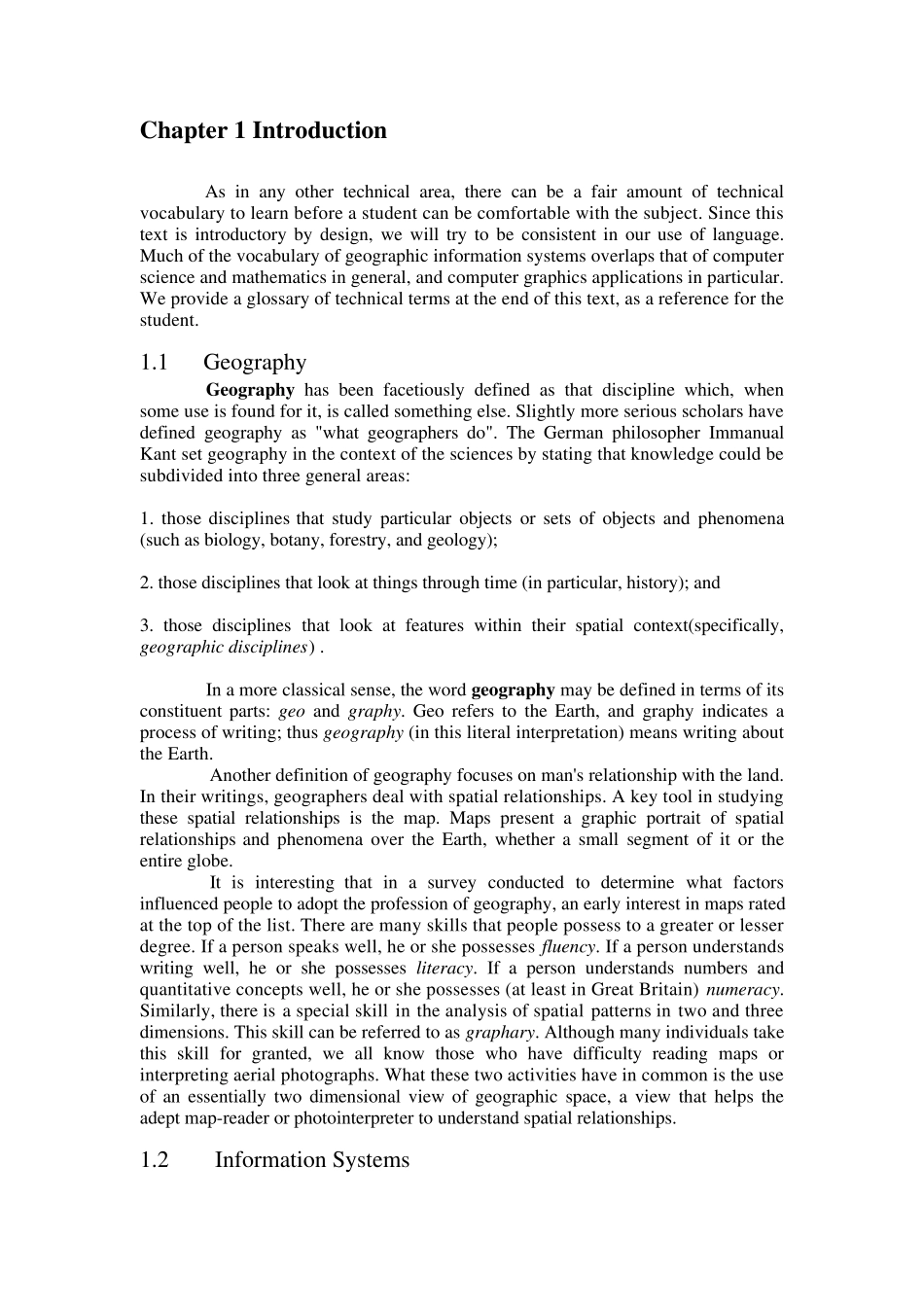Catalog Chapter 1 Introduction 1.1 Geography 1.2 Information Sy stems 1.3 A Manu al Geographic Information Sy stem 1.4 Applications 1.5 Geographical Concepts 1.6 The Fou r Ms Chapter 2 Background and History 2.1 The Cartographic Process 2.2 Early History 2.3 The Modern Era Chapter 3 The Essential Elements of a Geographic Information System: An Overview 3.1 GIS Fu nctional Elements 3.2 Data in a GIS Chapter 4 Data Structures 4.1 Raster Data Stru ctu res 4.1.1 Simple Raster Array s Chapter 1 Introduction As in any other technical area, there can be a fair amount of technical vocabulary to learn before a student can be comfortable with the subject. Since this text is introductory by design, we will try to be consistent in our use of language. Much of the vocabulary of geographic information systems overlaps that of computer science and mathematics in general, and computer graphics applications in particular. We provide a glossary of technical terms at the end of this text, as a reference for the student. 1.1 Geography Geography has been facetiously defined as that discipline which, when some use is found for it, is called something else. Slightly more serious scholars have defined geography as "what geographers do". The German philosopher Immanual Kant set geography in the context of the sciences by stating that knowledge could be subdivided into three general areas: 1. those disciplines that study particular objects or sets of objects and phenomena (such as biology, botany, forestry, and geology); 2. those disciplines that look at things through time (in particular, history); and 3. those disciplines that look at features within their spatial context(specifically, geographic disciplines) . In a...


